Latest Tech News
ME(me)morial: Kaepernick
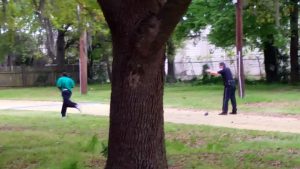
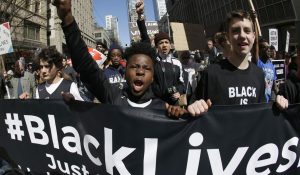

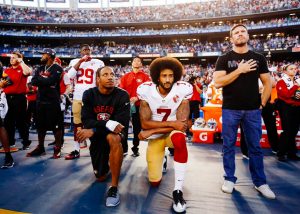

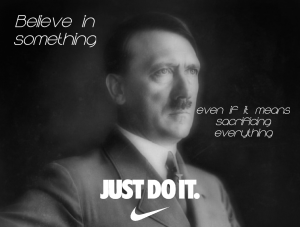


COLIN KAEPERNICK: Paradigm
MEmorial is a genre associated with konsult, whose purpose is to supplement conventional monumentality with a form native to the distributed collective identity of electracy. MEmorial commemorations support political and ethical formation of a fifth estate emerging within social media and entertainment corporate institutions. The event scenario developing around Colin Kaepernick manifests all the features of the genre, including making explicit the meme in MEmorial. This list inventories the unfolding of this case, which may be generalized as exemplary, replicable in principle, adopted as a relay for individual use.
- The Event for konsult is not located in any one incident, but emerges chorally in the coherence of the unfolding series. The motivating context is the existence of a disaster: the immediate symptom is the recurring incidents in which police kill Black citizens during interventions in traffic stops or other routine activities. The larger disaster opens out onto the social aporias of race, poverty, and the like.
- The symptom incidents provoked activists to form #Blacklivesmatter, a social movement facilitated by canny exploitation of social media as well as more conventional protest actions.
- A feeling of Injustice is the Call that initiates konsult as such. NFL quarterback Colin Kaepernick, an African-American, experiencing a profound feeling of injustice, created and performed a MEmorial (in our terms). MEmorials commemorate an Abject Sacrifice, that is, a sacrifice on behalf of a community value that is not acknowledged as such, not recognized as a loss justified within the culture by some value held to be worth the sacrifice. The abject sacrifice is promoted by the MEmorial from the liminal condition of one-at-a-time accidents, to a collective cumulative totality, representing the cost of preserving the value. The Vietnam Wall acknowledges that the 58,000+ lives lost in that war constitute a worthy sacrifice for the interests of the nation. MEmorials attach or associate themselves as peripherals to these recognized monuments in order to communicate their function, recognizing the abject (denigrated) loss as itself the collective cost of a value. The point is not to accept this loss, but to make explicit what is at stake in the on-going disaster.
- Kaepernick created a peripheral performance by kneeling during the playing of the National Anthem at the beginning of a game, violating the convention which is to stand to show respect for the Flag. The Anthem Ritual is the recognized monument. The action constitutes one bit of information (stand/kneel). From the point of view of konsult this was a brilliant design. The effect was enormous, due to the central place of professional sports in general, and the NFL in particular, in the public sphere of electrate society. Other athletes followed Kaepernick’s example, and the issue drew involvement of politicians, including President Trump who condemned the protests. Kaepernick became a free agent, and despite his proven abilities, was not hired by any team (he was blackballed, a term to which he gives new meaning).
- Enter Nike corporation with a major investment in the institution of sports at all levels, as part of its brand identity, to outfit teams with shoes and apparel, and through this display sell also to the general public. Nike signed Kaepernick to a lucrative contract to represent their Just Do It advertising campaign. The ad design evokes the traditional cultural value that considers athletic competition to be an important factor in the formation of character translatable to all areas of life (“The battle of Waterloo was won on the playing fields of Eton,” to cite a saying from English history). Part of what makes this event paradigmatic is that it involves precisely this corporate entertainment register of the apparatus (the corporation is to electracy what school is to literacy or church to orality).
- The ad campaign sparked protests as well as support. Images circulated on social media of people offended by the flag protest burning or defacing Nike products.
- The emblem design of the ad lent itself to replication, generating memes, the image-text genre central to the fifth estate public sphere. The richness of the event as a whole is measured by the multiplicity of social-political-economic-ethical themes packed into this scenario.

 Conduction (the fourth inference) is visceral. The image logic (reasoneon) we are developing as Gest suffers fallacies just as does the reasoning of abduction, deduction, and induction. Physiognomic inference operates in the type-casting of cinema, exploiting the same emblematics as racism, as in Nazi propaganda. This danger is a reminder that electrate rhetoric articulates the visceral dimension of intelligence (racists are physically repulsed by miscegenation, for example). This effect of concrete logic should not be denied or euphemized, but addressed as a resource in understanding the thymotic force operating in personal and public discourse.
Conduction (the fourth inference) is visceral. The image logic (reasoneon) we are developing as Gest suffers fallacies just as does the reasoning of abduction, deduction, and induction. Physiognomic inference operates in the type-casting of cinema, exploiting the same emblematics as racism, as in Nazi propaganda. This danger is a reminder that electrate rhetoric articulates the visceral dimension of intelligence (racists are physically repulsed by miscegenation, for example). This effect of concrete logic should not be denied or euphemized, but addressed as a resource in understanding the thymotic force operating in personal and public discourse.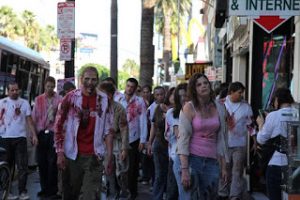 The existence of polysemous meaning has been noted throughout history–the repetition of patterns, the isotopies relating the different registers of the semiosphere (Lotman). Learning how to read these patterns is part of theopraxesis, since in the condition of the General Accident (that happens everywhere simultaneously [Virillio]) judgment and decision must be capable of registering macrocosm from details. That recognition of patterns does not dictate interpretation directly, to which may be added the Casandra effect. One of the better known examples of anticipation of disaster is the novel Futility, or The Wreck of the Titan, the 1898 novel by Morgan Robertson that foretold (in retrospect) the sinking of the Titanic (1912).
The existence of polysemous meaning has been noted throughout history–the repetition of patterns, the isotopies relating the different registers of the semiosphere (Lotman). Learning how to read these patterns is part of theopraxesis, since in the condition of the General Accident (that happens everywhere simultaneously [Virillio]) judgment and decision must be capable of registering macrocosm from details. That recognition of patterns does not dictate interpretation directly, to which may be added the Casandra effect. One of the better known examples of anticipation of disaster is the novel Futility, or The Wreck of the Titan, the 1898 novel by Morgan Robertson that foretold (in retrospect) the sinking of the Titanic (1912).
 Many reports indicate that many millions of people will be displaced by these conditions globally. The present crisis is advanced warning of what is to come on a much larger scale. What policy response is in keeping with the imperative of well-being against disaster? The Zombie scenario warns of total war. Philosophers such as Jacques Derrida urge the self-described impossibility of Hospitality. It is important to note that left theory long ago identified our horror motifs as icons and emblems of life under Capitalism. Politics in any case concerns the just allocation of finite resources. The General Accident of climate change demands a holistic response.
Many reports indicate that many millions of people will be displaced by these conditions globally. The present crisis is advanced warning of what is to come on a much larger scale. What policy response is in keeping with the imperative of well-being against disaster? The Zombie scenario warns of total war. Philosophers such as Jacques Derrida urge the self-described impossibility of Hospitality. It is important to note that left theory long ago identified our horror motifs as icons and emblems of life under Capitalism. Politics in any case concerns the just allocation of finite resources. The General Accident of climate change demands a holistic response. Event Gest.
Event Gest. 